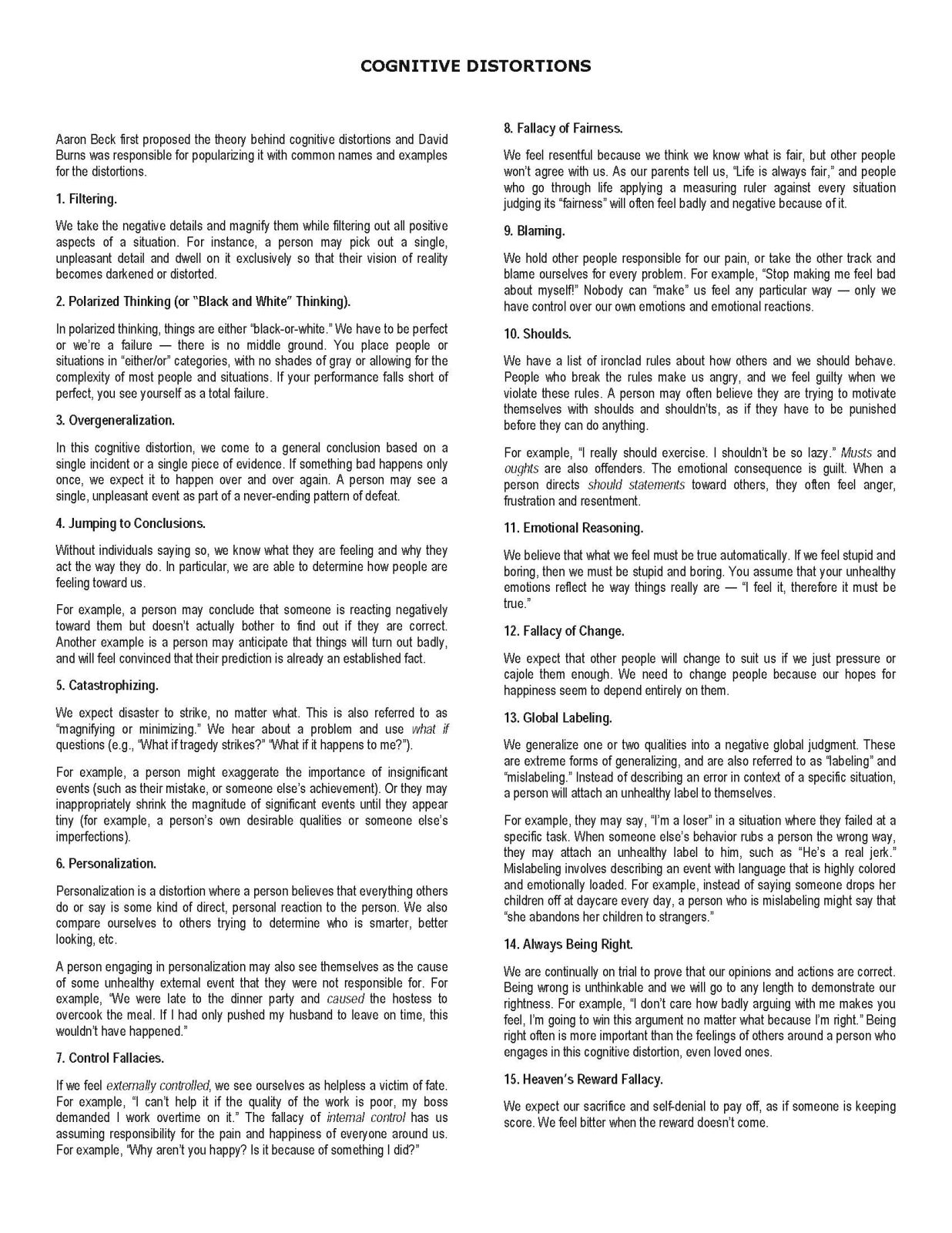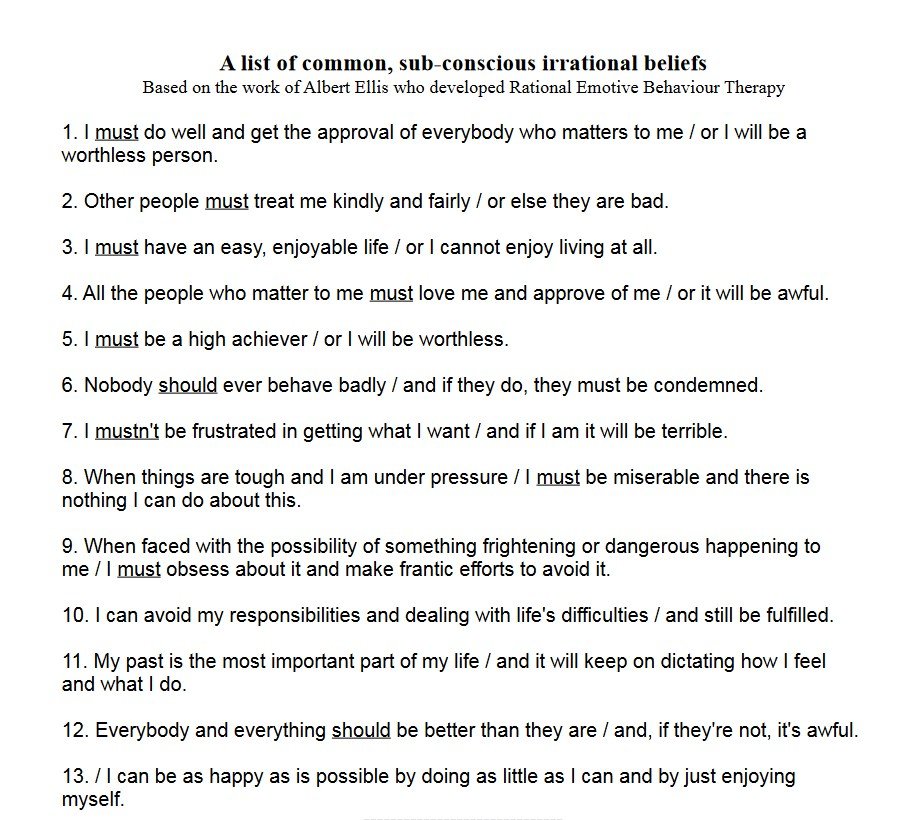
Cognitive Distortions
Group Idea 1: Write 3 examples of a distortion on a flip-chart sheet and post it around the room. Do this for each cognitive distortion. Have each client or small group go around the room and…
- Identify ways of dealing with the distress when they have that thought (or one like it)
- Identify how that way of thinking might be unhelpful to them achieving their current goals.
- Add at least 1 rebuttal/alternate, more helpful way of thinking about the situation to the list.
Group Idea 2: Have clients keep a thought journal over the week and share with the group
- the most common distortions they had that contributed to their distress
- the most common new thoughts they or coping behaviors they used had that helped them combat the cognitive distortions
Irrational Thoughts
Group Idea 1: Write an irrational belief on the white board
- Have clients identify how that belief can make them feel rejected, isolated, like a failure and/or powerless. Explain to them that those feelings trigger the threat response system because they are basic fears.
- Have clients identify the cognitive distortions present in their irrational (unhelpful) thoughts
- Wrap up group by having them rewrite the statements in a more moderate fashion
Group Idea 2: On the white board write: “What would you say if your (child/best friend) told you….[insert irrational thought].”
- Have clients come up with what they would tell their child in response to an irrational thought.
- Review distress tolerance skills to deal with statements that end in “it will be terrible” or “awful.”
- For each of the 13 thoughts, have clients identify what part of the situation they have control over.


ABC-DE: Putting It Together
Have clients share from their feeling/thought journals events which caused them distress over the prior week. Using the ABC-DE format, help the group, as a whole, brainstorm/identify the beliefs that may have lead to the consequence (distress). Then, evaluate each of the beliefs to identify cognitive distortions and unhelpful thoughts and alternate thoughts to challenge the unhelpful beliefs. This helps clients start putting into practice what they have learned over the past 4 or 5 groups.
Prepare the group with instructions for how to respond with “The belief {state the belief} seems to be [name the distortion]. I would challenge it by [suggestion for dealing with the belief].” Example: “The belief that “if everyone doesn't approve of me I am defective and unlovable” seems to be all-or-none thinking, or maybe magnification. I would challenge that belief by looking at all of the reasons I am lovable, and maybe think about whether that person doesn't approve of me because of me, or it is more about their stuff.” Therapist follow up: “By thinking about whether it is about you or more about their stuff, you might also be trying to take it less personally?
Other Great CBT Resources
Visit our Pinterest
